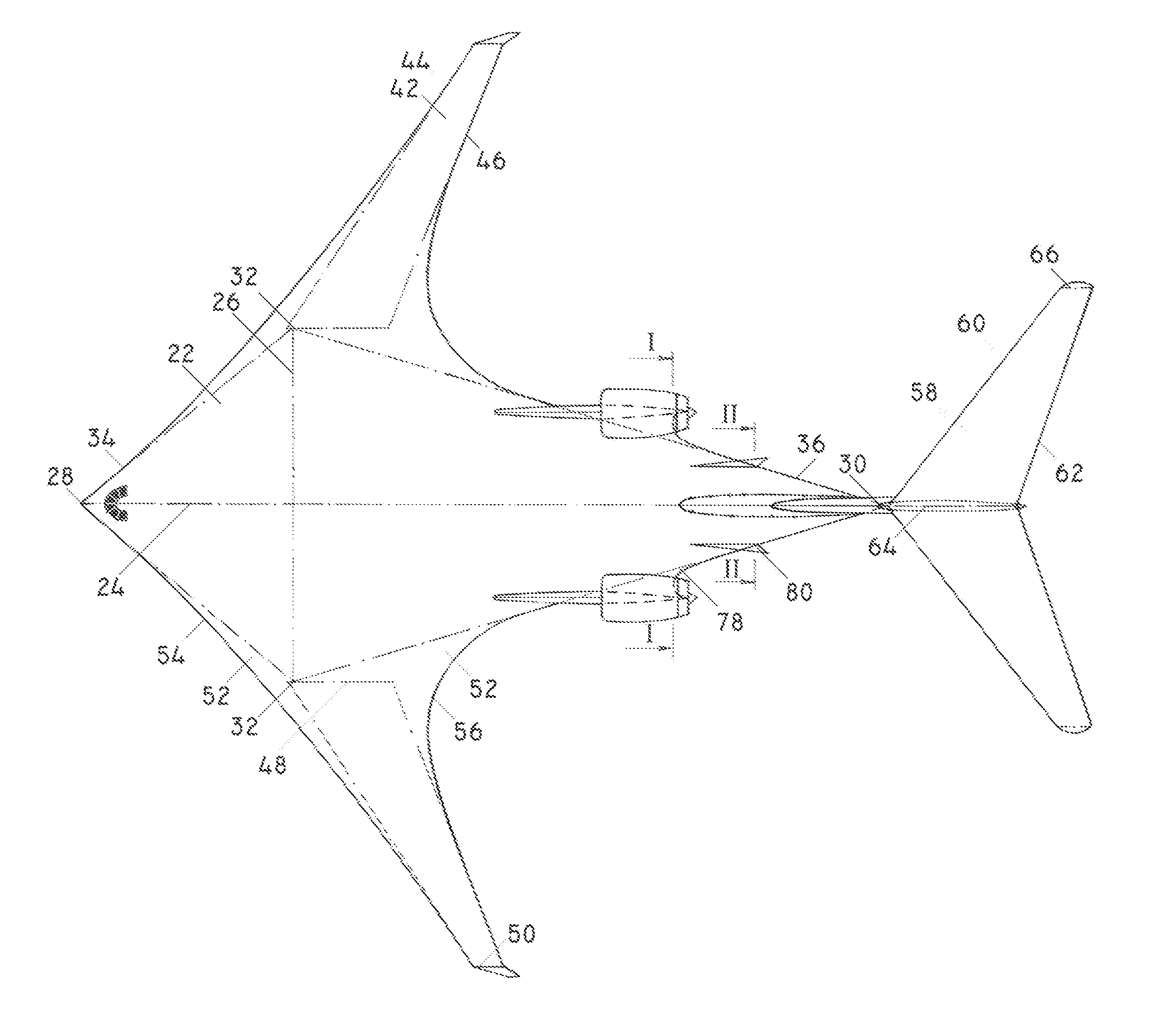The increased surface area of wings that substitutes fuselage provides for either a higher lift capacity or ability to fly at lower
attack angles, thereby resulting with lower profile, induced, and friction drag.
However, the absence of the
tailplane of “Tailess Flying Wing” concept is having significant negative effects on flight efficiency, as well as the maneuver and
flight safety of such aircraft.
A significantly increased
relative thickness of airfoils and the absence of the efficient
pitch control functions of the
tailplane have been the biggest constraints of the flying wing idea that prevented it from being widely implemented for
mass air transportation despite great initial promises.
However, this aircraft does not meet longitudinal dynamic stability requirements for
civil aviation, while being prohibitively expensive, hence it does not represent a serious theoretical and practical base for development of the flying wing aircraft for civil
mass air transportation.
The latest project related to the flying wing concept for civil air transportation is the Boeing's BWB-450 baseline version that is based on the “Tailess Flying Wing” concept, which despite significant improvements relatively to the prior BWB generations did not resolve the key shortcomings and limitations when compared to the classical concept aircraft as follows:It does not provide for a realistic position of
gravity center with positive static margin due to unfavorable longitudinal distribution of payload, fuel, and
airframe mass relatively to the neutral point, hence consequently being dynamically unstable in longitudinal direction.It does not allow for the utilization of efficient airfoils with aft camber due to the fact that the neutral point and
gravity center of the aircraft are significantly shifted in forward direction relatively to the mean aerodynamic chord.
Reflexed airfoils have a significantly lower efficiency at high subsonic and
transonic speeds, thus considerably decreasing the initial advantages of the BWB concept.It does not allow for the utilization of
trailing edge flaps at low speeds during
takeoff and landing, which in turn calls for a flight profile with high
attack angles during landing, thus having significant negative repercussions on
flight safety and
ride quality.It has a significantly lower longitudinal trim efficiency in cruising flight conditions due to a
short distance of trim surfaces from the aircraft
gravity center and the long mean aerodynamic chord of the airlifting surface.It has a significantly lower level of longitudinal maneuverability especially at low flight speeds due to a
short distance of maneuvering surfaces from the aircraft gravity center.In addition, the problem related to high relative thickness of airfoils in the payload area was not satisfactorily resolved despite certain improvements relatively to the previous BWB generations.
The relative thickness of airfoils in the payload area of the BWB concept is in the range between 10% and 15%, which is significantly increasing the compression and wave drag at flight speeds over Mach 0.8, thereby additionally decreasing the aircraft efficiency.
The significant negative aspects in connection with the efficiency and
flight safety of the “Tailess Flying Wing” concept, which are related to inability to provide for efficient
pitch control without
tailplane resulted with the emergence of various
hybrid versions of the flying wing concept with the tailplane.
However, the following are the negative effects of designs that were presented in the above patents:The application of thick airfoils due to short chords in the payload area, thereby reducing the aerodynamic efficiency at higher subsonic speeds.Rough aerodynamic transitions in lateral direction between the airlifting surface of fuselage and the airlifting surface of outer wings, thereby drastically increasing the interference drag and resulting with more complex
airframe configurations from the manufacturing point.All aerodynamic shapes from the prior art listed above are configured for low subsonic speeds only, which limits their application range.
However, a more detailed and encompassing aerodynamic analyses of this concept showed that the longitudinal position of the tailplane, which depends on the semi-elliptical form of the central section
trailing edge was not sufficiently shifted in aft direction to provide for the application of efficient supercritical airfoils in the payload area including the inability to deploy
trailing edge flaps during landing and take-off for the same reason.
The further elongation of semi-elliptical trailing edge of the central section with intention to additionally shift the tailplane in the aft direction would inefficiently increase the area of the airlifting surface, thereby increasing the friction drag and significantly decreasing the positive effects gained by shifting the tailplane in aft direction.
 Login to View More
Login to View More  Login to View More
Login to View More 


